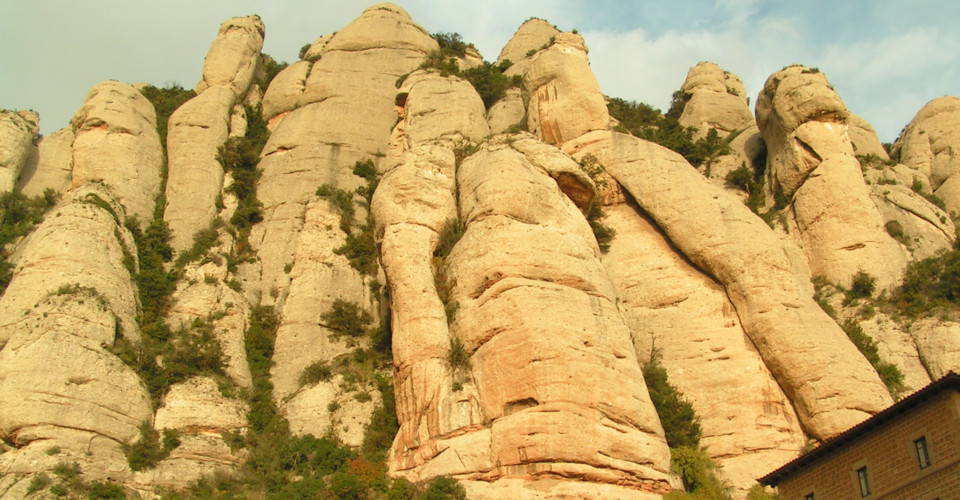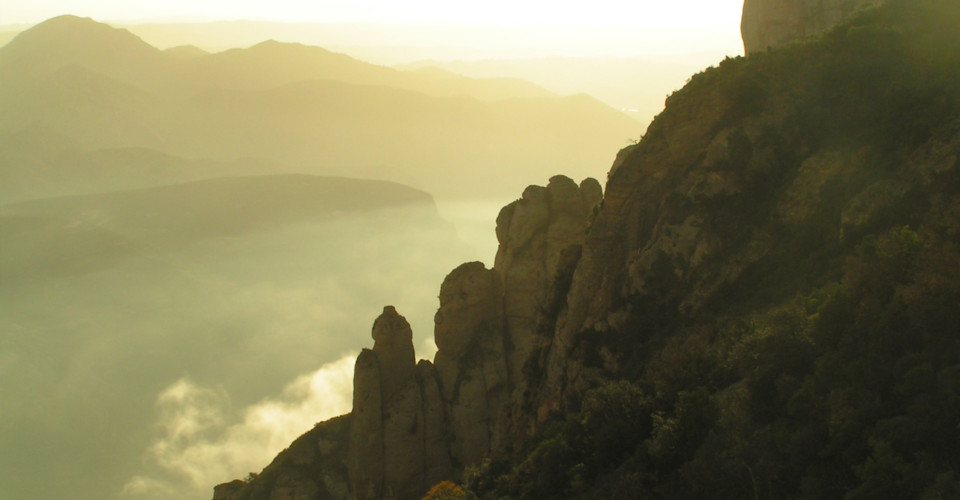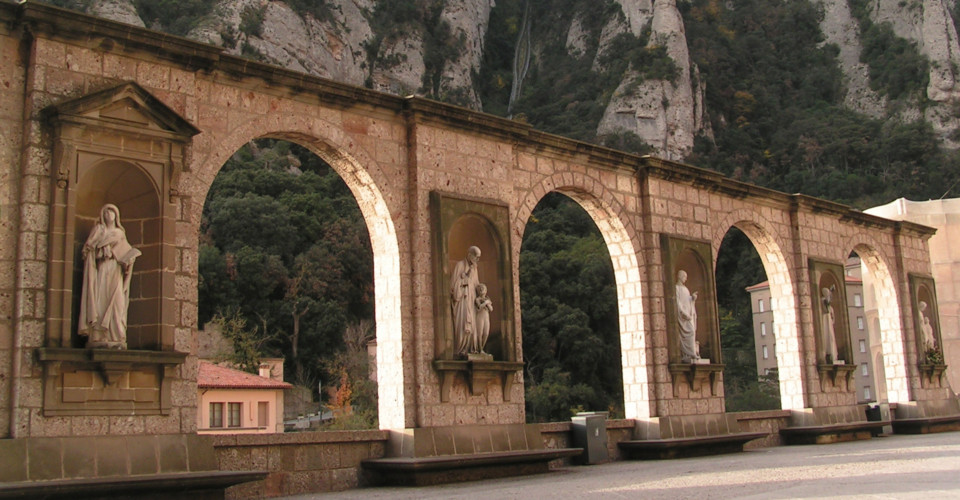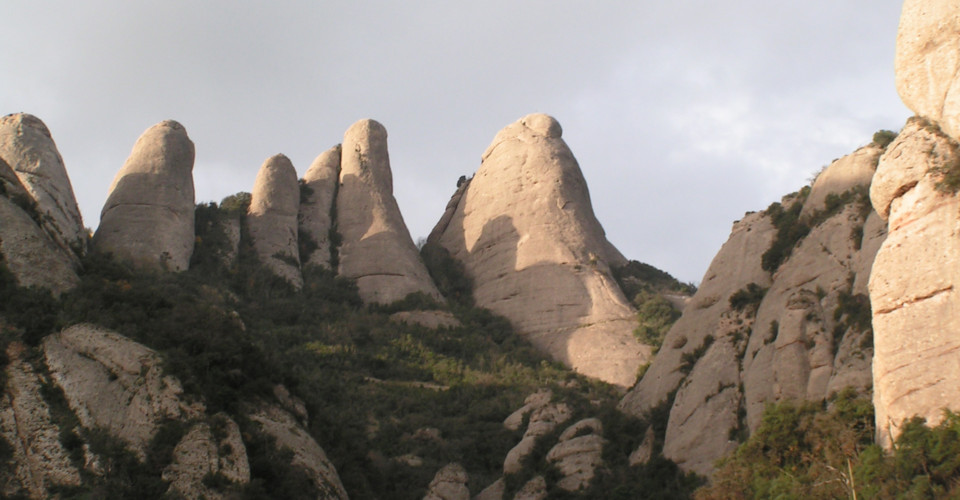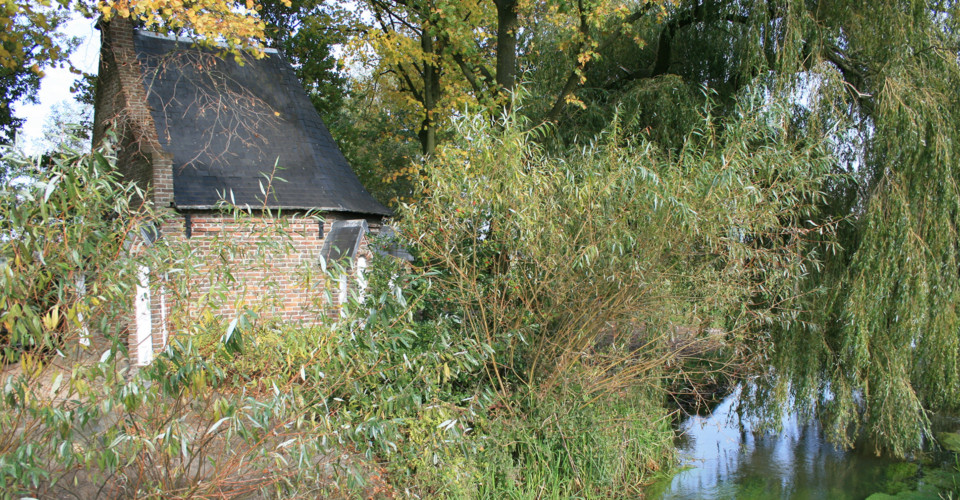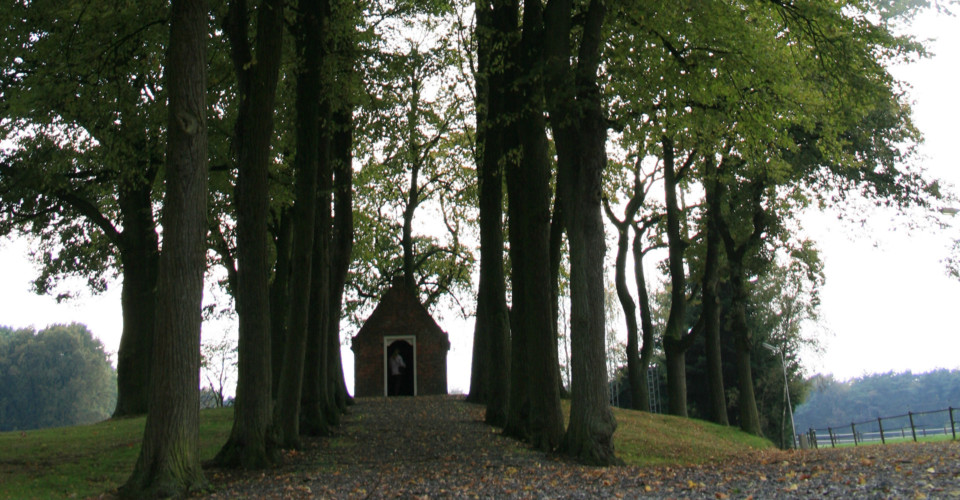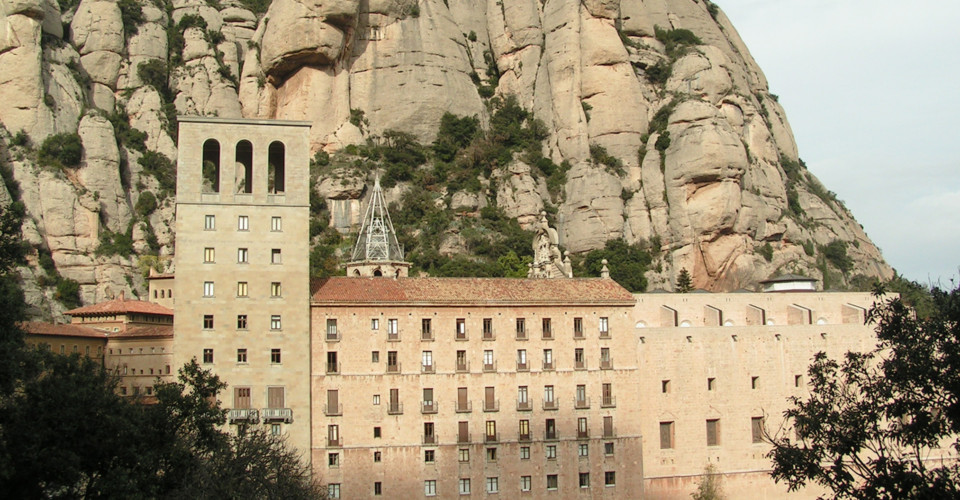"Inspirerad av andliga principer och med traditionell ekologisk kunskap, klostersamhällen utvecklade distinkta modeller för förvaltning av naturresurser, resulterar i vackra, harmoniska och mångsidiga landskap under många århundraden." - Mallarach et al. 2016
Site
Även om inte alla klosterländer nödvändigtvis är heliga länder, alla av dem har heliga platser i sig, av vilka många är heliga naturplatser medan andra innehåller konstruerade eller människor bygger heliga platser som dessutom värderas för kvaliteterna i sin naturliga omgivning. Europa och Mellanöstern tillsammans hus ca 5000 Kristna klostersamfund med över 80.000 nunnor och munkar. De är de äldsta självorganiserade religiösa samhällena i Europa som har stött naturen sedan deras etablering. Många av dessa kloster var skyldiga att utveckla tekniker för självhållbar existens, Om bara för att motstå tiderna på sina isolerade platser. St Anthony's, exempelvis, grundad i 356 AD på Al-Qalzam-berget nära Al Zaafarana i Egypten, producerar sina egna grönsaker och bröd. Mt. Athos och Meteora är bara några fler exempel på liknande metoder som finns över hela regionen. Dessa webbplatser moderniserar för närvarande, Att göra sina praxis ännu effektivare.
Hot
Det historiska förbudet mot religiösa organisationer har haft allvarlig inverkan på kloster, inklusive deras trädgårdar. Traditionellt förstördes grönsaker och en stor del av klosterträdgårdarna strippade. Dessa händelser upphörde lyckligtvis för över ett sekel sedan, När tolerans för klostersamhällen återvände. Då, Trädgårdarna mötte ett annat hot, nämligen minskande klosteraktivitet. Med en minskande mängd vårdgivare, Att upprätthålla det höga ekologiska värdet på länderna blev alltför mödosamt. Ett antal monastiska samhällen lider fortfarande av en nedgång, Men andra genomgår för närvarande en väckelse. I vissa fall, emellertid, Accenten i aktiviteterna ligger mer på intellektuellt arbete än det brukade leda till mindre övergripande vård för lokala växtsamhällen och naturen.
"Monastiska samhällens erfarenheter av att anpassa sig till och övervinna miljö- och ekonomiska kriser är relevant för både chefer och beslutsfattare som är involverade i skyddade och höga biologiska mångfaldsområden, Särskilt i regioner där det skyddade landskapet kan vara mer effektivt." - Mallarach et al. 2016
Vision
Några av de högsta andliga myndigheterna visar engagemang för naturvård i klostersamhällen. Påven Benedictus XVI uppfann konceptet "ekologisk omvandling", Med hänvisning till ett brådskande behov av en radikal livsstilsförändring för att minska konsumtionsvanor, men istället ägna mer uppmärksamhet åt skapelsen som en bild av det gudomliga. Andliga principer som nykterhet passar mycket bra med ekosystemets förbättringsåtgärder, Eftersom de minskar konsumtionseffekterna och ökar den tillgängliga tiden för att ta hand om miljön.
Åtgärd
Monastiska samhällen förblir i framkant när det gäller utveckling av miljövänliga metoder som ekologiskt jordbruk, djurhållning, botaniska trädgårdar och förnybara energier. Benediktinska samhällen fortsätter att vidta ledningsåtgärder för att förbättra lokala skogar och andra ekosystem. Vissa samhällen främjar sina åsikter och erfarenheter inom och utanför katolska gränser, Genom ett brett utbud av traditionella och moderna kommunikationsverktyg.
Politik och lagstiftning
På sjätte århundradet, St Benedict satte ett exempel på hållbar markförvaltning genom att förklara att samhällens mark måste vara åtminstone av lika fertilitet vid avgång som när samhällena anlände. Denna riktlinje har följts sedan dess. Nästan 50 kloster nämns för närvarande i UNESCO -listan över världsarv. De flesta inkluderar de länder de lyckades historiskt, som i allmänhet är mycket rika på naturliga arv och biologiska mångfaldsvärden. De har därför potential att klassificeras som blandade världsarv.
"I många länder, Moderna skyddade områden har etablerats på platserna för befintliga eller tidigare klosterländer, därmed skapa positiva synergier men också nya utmaningar både för bevarande och för de klostersamhällena." - Mallarach et al. 2016
Ekologi och biologisk mångfald
Monastiska mark har ofta högre ekologisk kvalitet än angränsande landskap. Monastiska länder omfattar ett brett utbud av landskap och ekosystem längs olika lutningar från låga till höga höjder, Våt att torka och mycket kallt till mycket varmt. De inkluderar sibiriska taiga, alpina och andra bergiga miljöer samt kustnära våtmarker och öknar. Munkar över hela kontinenterna brukade föda klosterspecifika grönsakssorter och underhålla botaniska trädgårdar med ett brett utbud av användbara och medicinska växter. Tyvärr förstördes många av dessa mellan den franska revolutionen och 1800 -talet.
"Monastiska samhällen är en av de äldsta självorganiserade samhällena med en kontinuerlig skriftlig post i bevarandehantering. De flesta kristna monastiska bevarade marker bör betraktas som samhällsbevarande områden som vanligtvis kategori V - skyddade landskap." - Mallarach et al. 2016
Vårdnadshavare
Många katolska klostersamhällen är över ett årtusenden gamla. Viktiga principer inkluderar stabilitet, disciplin, ensamhet, nykterhet och skönhet. Munkarna strävar efter att minska materiella behov, Orientering av andlig fördel istället. Egenskapen delas. Monastiska munkar och nunnor ser naturen som en bild av det gudomliga, en lärare, Och de strävar efter att hedra det som sådant. De gör detta genom att skydda länderna och förbättra deras egenskaper, för att överföra dem graciöst till kommande generationer. Två huvudsakliga livsstilar kan särskiljas: samhället (eller cenobitisk) liv, och isoleras (hermitisk) liv. Medan samhällen utvecklar ett brett utbud av naturvänliga praxis, Det sägs att eremit "lever en kosmisk upplevelse med naturen". Historiska poster räknar historier om heliga munkar som matas av lejon, björnar, Vargar och giftiga ormar, njuter av deras företag som vänner.
Coalition
Även om det kan finnas olika åsikter, De katolska klostrarna genom sin delade tro kunde ses som en enda koalition. De klosterområdena är bundna av deras hierarkiska struktur och visar många exempel på horisontellt samarbete, också i naturbevarande. Kanske är det därför mer intressant att notera att det finns exempel på samarbete med icke-katolska samhällen också. Till exempel, Europeiska munkar utbytte värdefull kunskap om hållbar landskapshantering med det buddhistiska samhället vid det interreligiösa mötet tema "Monasticism och miljö" i Kansas, USA. Många av klosterlanden är numera officiellt skyddade landskap. Detta visar att vissa regeringar arbetar tillsammans med klostermyndigheterna, Även om de flesta monastiska samhällen inte får gå med i statliga förfaranden. Relaterar specifikt till heliga naturliga platser, Det finns det intressanta exemplet på den välkomnande attityden hos Benedictine Community of Montserrat till den första verkstaden för Delos -initiativet, vilket ledde till den första gemensamma publiceringen av klostret med IUCN.
Bevarande Verktyg
Sammanlagt, Dessa monastiska samhällen har en rik mångfald av naturskyddsverktyg. De kan sammanfattas som naturbehandlingar, fina ekologiska produkter, Energiproduktion och moderna och traditionella kommunikationsverktyg för miljömedvetenhet (Även om de senare vanligtvis syftar till exklusiva publik). Tillvägagångssätt och aktiviteter inkluderar hållbart skogsbruk och restaurering av medicinska trädgårdar. Exempel på ekologiska produkter är ost, öl, vin, Örtläkemedel och rökelse. Energi produceras huvudsakligen vattenkraft och genom termoelektriska och solpaneler. Kommunikationsverktyg sträcker sig från symposi, tolkningscentra och guidade turer till DVD: er och webbplatser.
Resultat
Avsedd eller oavsiktlig, Många monastiska länder har länge hanterats som skyddade områden ofta utan nationell eller internationell erkänd skyddsbeteckning. De flesta av de äldre och större klosterländerna skyddas nu också av nationell lag. Experter kan skilja naturområden som historiskt har behandlats av benediktinska munkar från andra landskap främst på grund av den förbättrade biologiska mångfalden som återstår idag. I andra fall, Sacred Natural Sites har återhämtats efter medeltida skador. Moderna kloster har en rik och dynamisk mängd erfarenhet och dokumenterad kunskap om ett mycket brett utbud av hållbara metoder, Rotad i en lång tradition som kontinuerligt förbättras av användningen av nyförvärvade verktyg.
- Mallarach, J., Majs, J., & Papayannis, T. (2016). Christian Monastic Lands som skyddade landskap och samhällsbevarande områden: En översikt. Parker, International Journal of Protected Areas and Conservation, 22(1), 63–78.
- Mallarach, Jm. och papayannis, T. (2006) Skyddade områden och andlighet. Proceedings of the första workshop för Delos-initiativet - Montserrat. PAM publikationer. Montserrat.
- Mallarach, Jp. (2010) Klostersamhällen och naturskydd: Översikt över positiva trender och bästa praxis i Europa och Mellanöstern. I: Mallarach JP, Papayannis t och väisänen r. Mångfalden av Sacred Lands i Europa. Fortsättningar av den tredje verkstaden för Delos -initiativet - INRI/Anar.
- www.urbandharma.org

